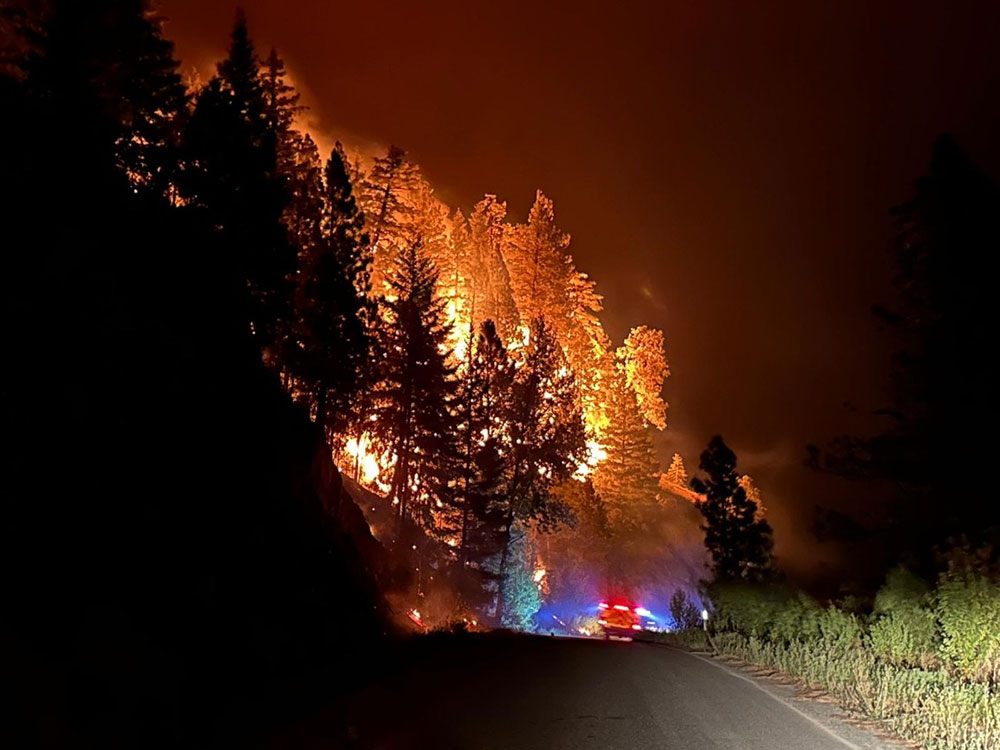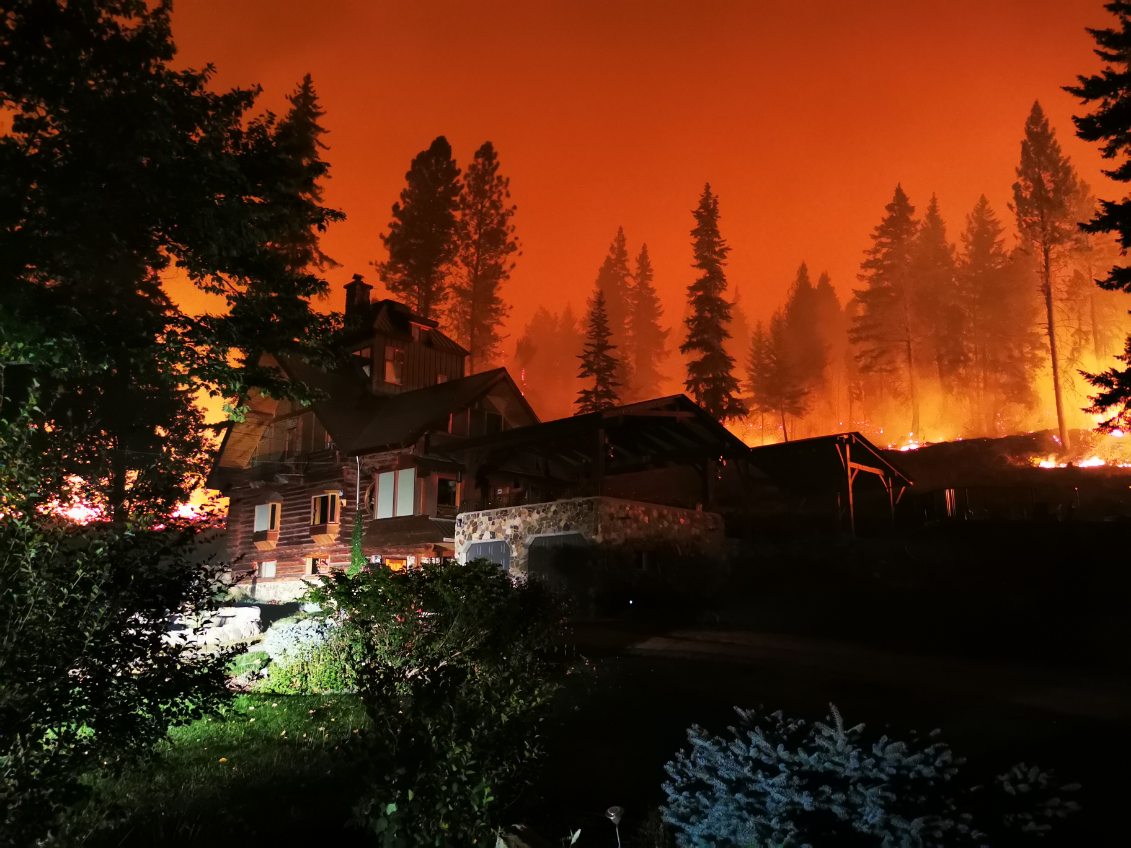For Jim Cooperman, the reminders of last year’s wildfires are right outside his door.
“It’s always with us,” said Cooperman, who was in Victoria this month knocking on doors at the British Columbia legislature and pressing the government to improve its wildfire fighting. “We can’t forget about it. It’s right in our backyard.”
Cooperman lives on 16 hectares of forest in the North Shuswap between Kamloops and Revelstoke. Last year 14.5 hectares burned. When he and his wife, Kathi, walk from their home, it’s through a landscape of burnt trees.
The damage was part of B.C.’s worst forest fire year on record. Some 28,000 square kilometres of forests burned while the province spent more than $800 million fighting the fires. More than 48,000 people were subject to evacuation orders. Six members of the province’s firefighting community died.
A 14-member government-appointed expert task force is expected to report soon with recommendations on improving emergency preparedness and response. Premier David Eby says the province is already acting on the task force’s preliminary recommendations.
Despite the extensive damage to their property, the Coopermans emerged from the fires relatively unscathed. They evacuated from their home and stayed with relatives for three weeks. They lost a big shed Jim Cooperman said was full of beautiful lumber, but their house was spared.
A longtime environmental advocate who runs an email listserv on forestry issues, Cooperman came out of the experience sharply critical of the BC Wildfire Service and the provincial government.
He said he speaks for many in his community. “There’s a huge sense of anger and a level of concern that’s over the top for many of us,” he said.
In particular, many are angry about how the 300 or so people who stayed behind to fight the fires were treated, Cooperman said, despite the success they had with homemade equipment, sprinkler systems, pumps and tanks on the backs of trucks.
“The government treated them like criminals,” he said, adding that it’s consistent with the treatment of locals during past fires. “There’s no trust. The government doesn’t trust its citizens.”
Cooperman figured the government is protecting turf for the wildfire service, members of which are recognizable in their red shirts, and contractors paid to fight fires.
“Wildfire fighting has become a business,” he said. “If they let the locals do it there’s less work for the unions, less work for the BCGEU, less work for the red shirts.”
A petition Cooperman started in December with input from foresters and other community members identifies eight “failures” of the wildfire service and calls on the government to better use local resources.
The petition advocates for minimizing the use of out-of-province crews and incident management teams, instead building local capacity and establishing more wildfire crews within the province. When there are no fires to fight, it said, the crews could work in interface areas to reduce wildfire risks.
In the long term, it said, “the BCWS needs to completely change their approach to firefighting.” A new plan needs to address all components of fire management, it said, “including fire planning, prevention, detection, initial attack, big fire management and community involvement.”
As of mid-month the petition had more than 3,100 signatures and Cooperman was delivering it to the offices of politicians in Victoria, starting with Forests Minister Bruce Ralston.

He also prepared a briefing note for the province on behalf of the North Shuswap Defence Committee that called for using local crews to rapidly attack fires early, providing an independent review of any planned burns used to suppress wildfires and re-establishing a fire warden system that would co-ordinate with local volunteer fire departments.
Eby said the wildfire service is already preparing for next season. The task force’s work isn’t complete or public yet, but it has been making recommendations to the government as it goes along, and the advice is already being implemented.
“When we set up the task force... we structured it in a way intentionally that they would provide recommendations to us in real time so that we could start work right away,” Eby said. “The fear that I had was we wait for them to do a bunch of work and then they provide a report to us, by the time we get the report it’s too late to implement the recommendations for the fire season we’re already preparing for.”
Many of the lessons have been about how to work better with local communities to leverage local knowledge and respond faster, Eby said. Especially in rural and remote communities, including First Nations, the government is making sure people have the equipment and training they need to respond to fires quickly.
The BCWS is transitioning to a year-round service and firefighters are getting the opportunity to work in the area where they live and better understand the land, Eby said. There are upgrades for equipment, including agreements for the use of helicopters and planes, he said, as well as new camp systems and water distribution systems.
“We are taking the steps now to keep people safe for the fire season to come, for the floods to come, for the heat to come, because that’s what we have to do,” Eby said.
Cooperman said he provided recommendations to the expert task force about seven weeks ago, but given the BC Wildfire Service presence on the committee, he felt skeptical about where it will lead.
Still, before leaving Victoria he had a meeting with an official in Ralston’s office and left it feeling like he’d been heard. “They are basically as equally concerned about these issues as we are,” he said.
Now it will be a matter of waiting to see what the task force recommends, he added, and whether the government is serious about making the needed changes. ![]()
Read more: BC Politics, Environment

















Tyee Commenting Guidelines
Comments that violate guidelines risk being deleted, and violations may result in a temporary or permanent user ban. Maintain the spirit of good conversation to stay in the discussion and be patient with moderators. Comments are reviewed regularly but not in real time.
Do:
Do not: